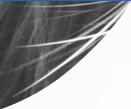FOUR GREAT REASONS
TO JUMP YOUR DRESSAGE HORSE
'Dressage coaches should study jumping' was my suggestion in last week's blog, and a number of people have asked me why I said this. I believe that instead of doing poor dressage tests, for example when you are learning the sport or have training 'challenges', you can do good jumping exercises instead. These jumping exercises can be an important part of the process to achieving quality dressage work. There are four main reasons why I say this.
1 – GREAT TO IMPROVE THE USE OF THE HORSES' BACK.
Using the back, also called ‘coming through in the back’, is essential for dressage…but is often missing. The back is the suspension bridge between the back and front legs and it needs to lift and be mobile despite the weight of the rider. It is a fundamental requirement if a horse is to come ‘between the aids’, be ‘connected’, and to accept the rein contact. In other words the way a horse accepts the rein is directly related to how they 'come through' from behind and use the back.
It is very difficult to reproduce the athletic movement of a jump, and the encouragement this gives to use the back, in any other way. In addition, with the rider having a light seat, keeping a consistent balance, and not coming against the horse, as with so much poor dressage riding, the horse is also allowed to use the back.
NB A first prerequisite to jump your horse is the ability to be balanced in the rising/posting trot, with no need to grip and just kissing the saddle as you lower the seat before rising again, and to be able to easily keep your balance with the seat out of the saddle for say 1mn 30 sec to prove your fitness for a show jumping round.
2 – GREAT TO CREATE A POSITIVE EXPERIENCE FOR THE HORSE
‘Forward’ riding and forwardness is essential for dressage dressage…but is often missing. When jumping a forward, positive, canter is encouraged, and most horses enjoy jumping, as is shown by their keenness before the jump and squeals of delight afterwards.
As ever the mental preparation of your horse is integral to a good physical preparation so this can yield very real gains, especially if you have been restricted to riding in a small area because of winter weather or a lack of outside riding. Once a horse 'switches off' mentally it is something that severely restricts the quality and potential of the performance. Even though you may correct this by good mental training it will then be something that can quickly rear it's head again when things get slightly testing in the future.
Most horses love riding in company and trotting and cantering outside...and they will discover they love jumping if the exercises are well presented and well within their ability.
3 – GREAT FOR LESS RELIANCE ON THE REIN CONTACT.
An 'allowing' hand is essential for dressage…but once again is often missing. It is required if the horse is to accept the rein contact and be allowed to develop a natural outline. Instead a fixed hand and forced unnatural outline is often seen. When jumping it is possible to put the horse between the leg and the fence, instead of between the leg and hand, and release the rein contact more. As the horse uses the neck and top line over a fence a rider gets more use to using an allowing hand.
Particularly in training it is useful to jump grids with no rein contact, and allow the horse to find an improved self carriage, balance and use of themselves with no interference from the rider. As these exercises are done you will often find that your horse is going better between fences, with more athleticism and impulsion, than in the previous session on the flat.
4 – GREAT FOR DRESSAGE MOVEMENTS PREPARATION
A well-designed jumping course is like a wonderful flowing dressage test in canter. The patterns and shapes are great for horses and a logical preparation for a dressage test. Remembering the course, including the jump off, is also good preparation for the rider remembering dressage tests.
In addition there is one more 'golden key' benefit. In a jumping round you do not ride off the markers on the outside of the dressage arena. This is a major reason for crookedness in a horse...with the outside shoulder of the horse being locked against the outside track and the letters. This does not happen nearly as much with jumping riders who follow the line of the course instead of riding letter to letter. Interestingly, riders who are lucky enough to ride in fields rather than an arena, tend to naturally imagine an inside rather than outside line. As these riders imagine their circle line on the INSIDE, it means they automatically ride with the shoulders in a very slight position to the inside...just like a top dressage rider. MAGIC!
So in the arena put cones on the ground on the inside and ride around these cones and you will feel the benefit almost instantly. Then get in the habit of always imagining cones to the inside of your bend. This, without doubt, is one of the most simple but most effective things you can do as a rider to improve straightness and harness impulsion....but....don't force it. Instead just keep trying to follow that inside line. Read more about this in my book, the Complete Horse Riding Manual published by Dorling Kindersley.
So enjoy your jumping with the help of your wise coach, who will both ensure you are jumping with safe distances between fences and teach you how to build fences and what distances to use between fences. Happy days and a feeling of flight. What more could a rider wish for. Happy days. William
[ back to Articles ]
|


